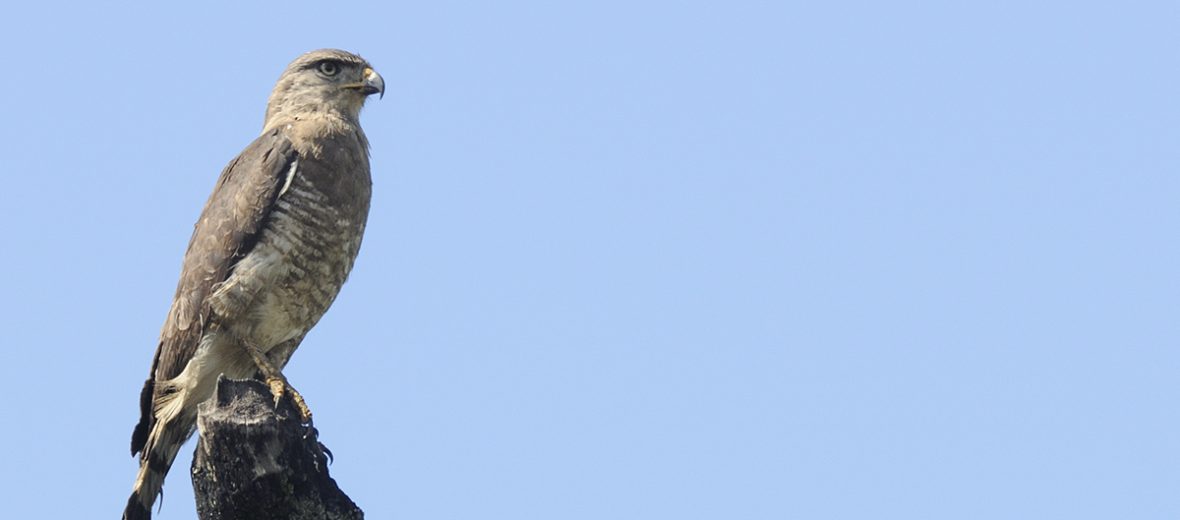
The southern banded snake eagle hails from Somalia to northeastern Kwazulu-Natal, inland along the Save River, on into south eastern Zimbabwe. They prefer evergreen coastal forests, thick inland forests near wetlands, and can sometimes be seen in open woodland habitats. Facing the threats of habitat loss and destruction at the hands of the logging industry, as well as climate change, these birds of prey are listed as Near Threatened by the IUCN. Their populations are also decreasing.
First the Stats…
Scientific name: Circaetus fasciolatus
Weight: Up to 39.15 ounces
Length: Up to 23.62 inches
Wingspan: Up to 50.39 inches
Lifespan: Up to 10+ years
Now on to the Facts!
1.) As of 2021, there were an estimated 2,000 wild individuals remaining.
2.) They are also known as the east African snake eagle and the fasciated snake eagle.
3.) These birds of prey are vocal and produce a high-pitched, “ko-ko-ko-ko-kwaaaak” or “kerk kowa.” These calls are made either while in flight or from a perch.
4.) Primarily eating snakes, these raptors will also take lizards, amphibians, and even termites (when they are in flight).
5.) Larger snakes are ripped apart into smaller chunks and then eaten. While smaller snakes are eaten whole, head first.
But wait, there’s more on the southern banded snake eagle!
6.) The southern banded snake eagle is diurnal (active during the day).
7.) The nest is built by both the male and female.
Did you know…?
Their legs are covered with thick scales that protect them from snake bites.
8.) The nest measures approximately 27+ inches across, and is built with small sticks.
9.) Females lay a single egg that hatches in up to 50 days.
10.) The chick is fed a diet of torn apart snakes until it fledges.
Now a Southern Banded Snake Eagle Video!
Be sure to share & comment below! Also, check out the Critter Science YouTube channel. Videos added regularly!
Want to suggest a critter for me to write about? Let me know here.
Some source material acquired from: Wikipedia & IUCN
Photo credit: Holmen Birding Safaris



